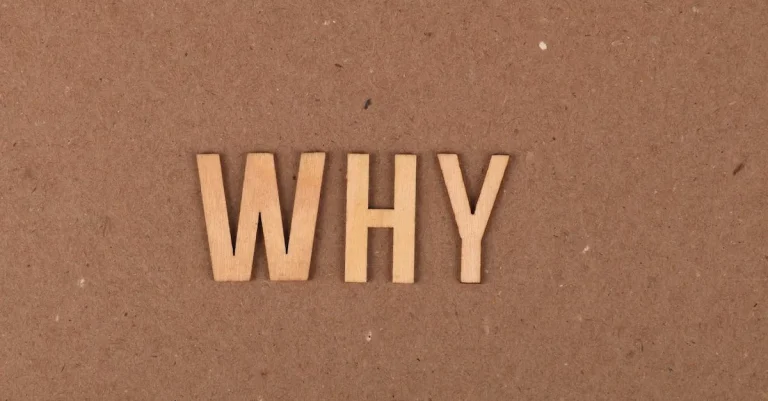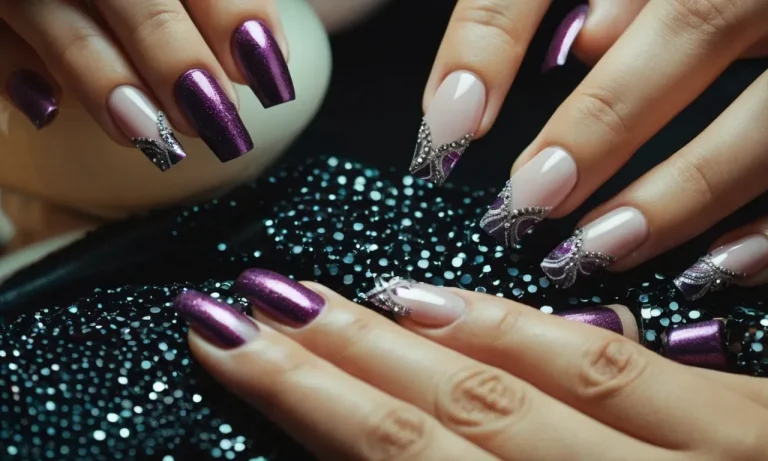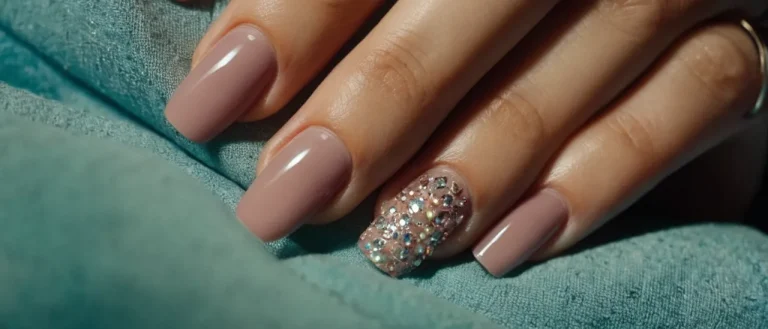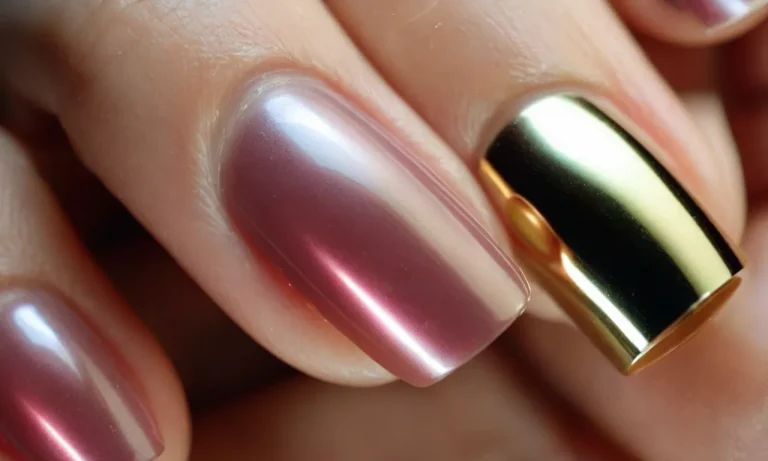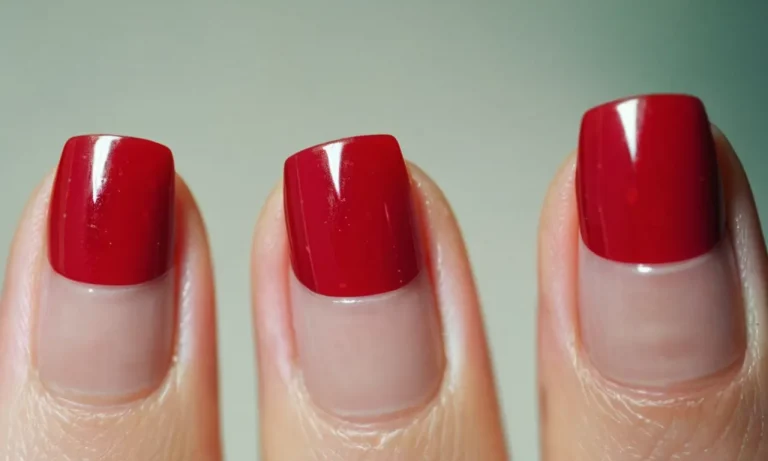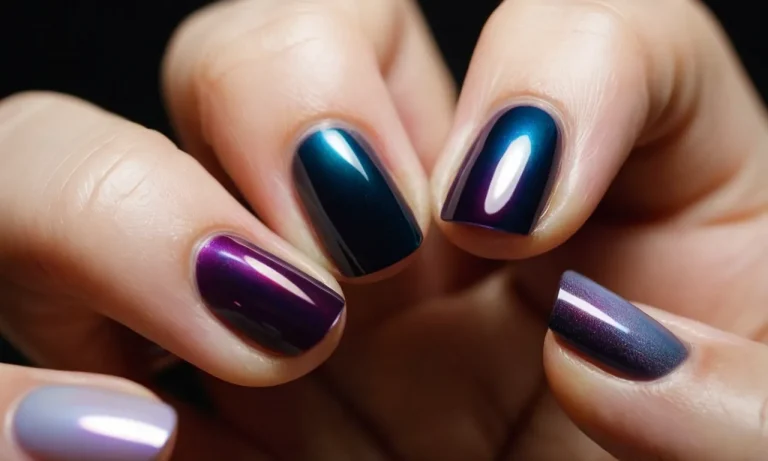What Is A Coke Nail? A Detailed Look At This Controversial Fashion Accessory
If you’ve noticed some people sporting a long pinky nail, you may have wondered what’s up with that. This type of nail has an intriguing history and goes by the name ‘coke nail’.
In short, a coke nail is a pinky fingernail that is grown much longer than the other nails. It’s traditionally associated with cocaine use, as the long nail can be used to scoop and sniff cocaine. However, today it is sometimes worn just as a fashion statement.
In this comprehensive guide, we’ll explore the full history and cultural significance of the coke nail. We’ll cover how it got its name, who tends to wear coke nails, the practical uses of this nail, and the controversy surrounding it.
We’ll also look at how coke nails are perceived in popular culture and fashion today.
The Origins and History of the Coke Nail
The coke nail rose to prominence in the 1970s and 80s
The origins of the coke nail can be traced back to the 1970s and 1980s when cocaine use became more widespread, especially among certain subcultures. During this time period, cocaine was considered a glamorous party drug associated with celebrities and the wealthy.
As cocaine surged in popularity, a distinctive fashion accessory arose – an abnormally long pinky fingernail, dubbed the “coke nail.”
This extra long nail, often finely manicured, served a functional purpose. It made it easy for users to scoop up powdered cocaine and sniff it through the nose. Rather than having to use a straw or other paraphernalia, the nail became a discreet, built-in tool for ingesting cocaine on the go.
It was especially popular in the glam rock and punk scenes
The coke nail was particularly pervasive among glam rock musicians and fans in the 1970s and 80s. Glam rock pioneers like David Bowie, Lou Reed, and Iggy Pop were known cocaine users. Their followers emulated the glam lifestyle, which centered around decadence, parties, and drug use.
Punk rockers also adopted the coke nail in droves. Hard partying bands like the Sex Pistols and The Ramones popularized snorted cocaine use within punk culture. Fans imitated punk fashion styles like spiked hair, ripped clothing, and conspicuously long pinky nails.
The long pinky nail made it easy to scoop and sniff cocaine
The functional purpose of the coke nail was undeniably tied to cocaine use. While fashion choices often carry symbolic meaning, the elongated nail served one primary, utilitarian purpose – providing users with an easy way to scoop up powdered coke and inhale it through their noses.
Rather than carrying around straws or other tools, the nail was always attached and readily available whenever cocaine was available. The extra length allowed users to dip directly into baggies or piles of cocaine, then lift it to their noses and sniff.
This made snorting casual and discreet at parties, concerts, or clubs.
Who Tends to Wear Coke Nails?
Associated with Hip Hop Culture and Rap Musicians
Coke nails became a bold fashion statement in the 1980s associated with the rise of hip hop culture and famous rappers sporting flashy gold jewelry and long fingernails (1). Artists like Kool Moe Dee, Kurtis Blow and Grandmaster Flash helped popularize the extra long pinky nail that could be used for scooping cocaine.
Their glam look inspired people to embrace the edgy style.
According to statistics from the Recording Industry Association of America, rap music grew sevenfold from 1986 to 1991 when legends like Run DMC and LL Cool J hit the scene. Fans mimicked rappers by wearing thick gold chains and rings while keeping buffed nails.
Long, curved fingernails persist today among hip hop performers like ASAP Rocky, Lil Wayne and Riff Raff.
Also Worn by Non-Drug Users as a Fashion Statement
Although strongly tied to coke use historically, extra long nails have permeated mainstream society with some wearers abstaining from drugs. Models on Instagram showcase elaborate designs from artists charging up to $250 per set (2).
Custom colors, Sworovski crystals and UV gel nail art transform hands into mini Billboards. The style retains mystique from the outlaw era.
Fans praise lengthy claws for projecting confidence and attitude. Indeed, sharp stiletto tips prevent the wearer from performing mundane tasks requiring fine dexterity. Assistants must step in to dial phone numbers or fasten buttons.
Status and allure radiate from standing out with audacious beauty choices.
Part of 1980s Glam and Goth Aesthetics
Long before hip hop adopted the coke nail trend, certain music subcultures in the US and UK set the foundation. When David Bowie and Marc Bolan popularized glitter rock in the early 1970s, a unisex glam persona emerged with bright makeup and lurid outfits.
Punk genres expanded self-expression throughout the ‘80s as fans grew black or red talons to complement all-black goth wardrobes.
| Mid 1980’s | Siouxsie Sioux | Dramatic black nails |
| Late 1980’s | Robert Smith | Dark crimson nails |
The Practical Uses and Purpose of a Coke Nail
Allows easy access to cocaine and other drugs
A coke nail provides a convenient way for people to quickly access and use cocaine or other powders. The longer fingernail allows someone to easily scoop up the drug and sniff it into the nose. Without a built-in tool like a coke nail, people would have to use keys, straws, or other objects to take the cocaine.
The nail eliminates the need to carry paraphernalia and allows for more discreet drug use in social settings.
According to a 2015 study, around 1 in 10 Americans have tried cocaine at some point. For frequent users, having a coke nail readily available can enable their habit and make using cocaine simpler and stealthier.
Can be used to quickly scoop and sniff cocaine
The longer nail length of a coke nail allows for cocaine to be quickly scooped up and sniffed into the nostrils. Simply dipping the nail into the cocaine powder gathers enough for a bump. The user can then swiftly bring their hand up to their nose and sniff the drug off their nail in one smooth motion.
This is easier and faster than using a straw or other tool to move the cocaine from the surface it’s on into the nose. The nail acts as a sort of built-in shovel that allows someone to seamlessly scoop and sniff the drug in seconds.
Provides a built-in cocaine spoon
A coke nail essentially provides a miniaturized cocaine spoon attached to the user’s finger. Whereas a regular spoon would be inconvenient and obvious to carry around, a coke nail is subtle and always available when needed. The nail’s convex surface is perfect for scooping up bumps of powder.
Rather than fussing with separate tools like straws or spoons, the nail implements an inconspicuous, attached serving utensil for cocaine. This allows for sly, rapid use in social environments where privacy is limited.
Users don’t have to worry about anyone questioning why they are carrying around questionable paraphernalia.
The Controversy and Perceptions Surrounding Coke Nails
Seen by many as promoting drug use and addiction
Coke nails have long been associated with cocaine use and abuse. The long, pointed nail is perfect for scooping cocaine powder and snorting lines. According to a 2020 survey by the National Institute on Drug Abuse, over 5 million Americans aged 12 and older had misused cocaine in the past year.
This perception of coke nails promoting drug use leads many to see them in a negative light.
Having long nails has become a symbol of living a drug culture lifestyle for some critics. They see it as flaunting illegal drug use. Over 70,000 Americans died from drug overdoses in 2019, so some believe coke nails glorify a serious addiction problem plaguing society.
However, others argue most long nail wearers are not using them for drugs, but simply enjoy the style.
Some find long nails unhygienic
Many perceive long nails, especially long natural nails, as unclean and unhygienic. Research has shown that fingernails harbor more germs and bacteria than nearly any other part of the hands. A 2017 study found fingernails contained an average of 26,000 bacterial colony forming units compared to 3,600 on the fingertips (1).
Longer nails provide more surface area for germs to accumulate. Underneath artificial nails can be a breeding ground for mold and fungal infections. However, proper hand washing and nail cleaning can greatly reduce risks.
Still, the unhygienic reputation causes some to have an adverse view of long, stylized nails.
Associated with a drug culture lifestyle by critics
The aesthetic of long, decorated nails has become associated with urban culture, hip hop, and the club scene by some critics. They see it as part of embracing a drug culture lifestyle, along with expensive cars, jewelry, and clothing.
However, nail art and decoration has become mainstream, with intricate designs worn by women of all walks of life.
Statistics show cocaine use has actually significantly declined over the past two decades. The rate of cocaine use in 2019 was under 2%, down from over 3% in 2002 (2). So while coke nails may have originated from cocaine use, today they are more a symbol of bold fashion than drug culture for most wearers.
| Year | Cocaine Use % |
|---|---|
| 2002 | 3.05% |
| 2019 | 1.93% |
While criticism persists, long nails have gone mainstream with celebrity influencers and nail art lovers around the world. Like any accessory, they can be perceived both positively and negatively. But for most wearers today, they are simply a fashion statement and form of personal expression.
References:
(1) https://www.ncbi.nlm.nih.gov/pmc/articles/PMC4862344/
Coke Nails in Fashion and Popular Culture Today
Sometimes worn ironically or as an edgy fashion statement
In recent years, some fashionable celebrities and models have sported extremely long nails as an ironic throwback or edgy fashion statement. While not strictly coke nails, these long talons call to mind the excessive drug culture of the 1980s and 90s.
For example, Billie Eilish and Tracee Ellis Ross have shared photos on social media showing off impossibly long red or pink nails. Other young stars like Dove Cameron or Addison Rae have sported a similar style.
Popularized by hip hop stars and rappers
Coke nails had their heyday back in the 80s and 90s thanks to their popularity among hip hop stars and rappers. Artists like Snoop Dogg, Raekwon, and even Kurt Cobain sported stylishly long pinky nails.
The extra-long nails were useful for scooping cocaine, but also served as symbols of luxury, money, and excess. Hip hop hype around gold chains, fast cars, and sharp clothes glamorized the coke nail look.
Shows up on runways and in fashion magazines
Occasionally coke nail-esque styles show up printed in the pages of fashion magazines like Vogue or seen on high fashion runways. Top designers like Vivienne Westwood have incorporated freakishly long coke nails into their couture shows.
However, these high fashion evocations of coke nails serve more as an tongue-in-cheek homages to vintage punk style. Few everyday people could get away with wearing such extreme talons.
Conclusion
While the coke nail originated many decades ago within countercultures associated with drugs and partying, it remains a recognizable symbol today. The long pinky nail continues to be controversial, with its association with cocaine carrying a stigma.
However, it has also evolved into a fashion statement and trend adopted by musicians, celebrities and fashionistas. Whether you see it as edgy and cool or promote drug use, the coke nail has an unforgettable place in fashion history.


